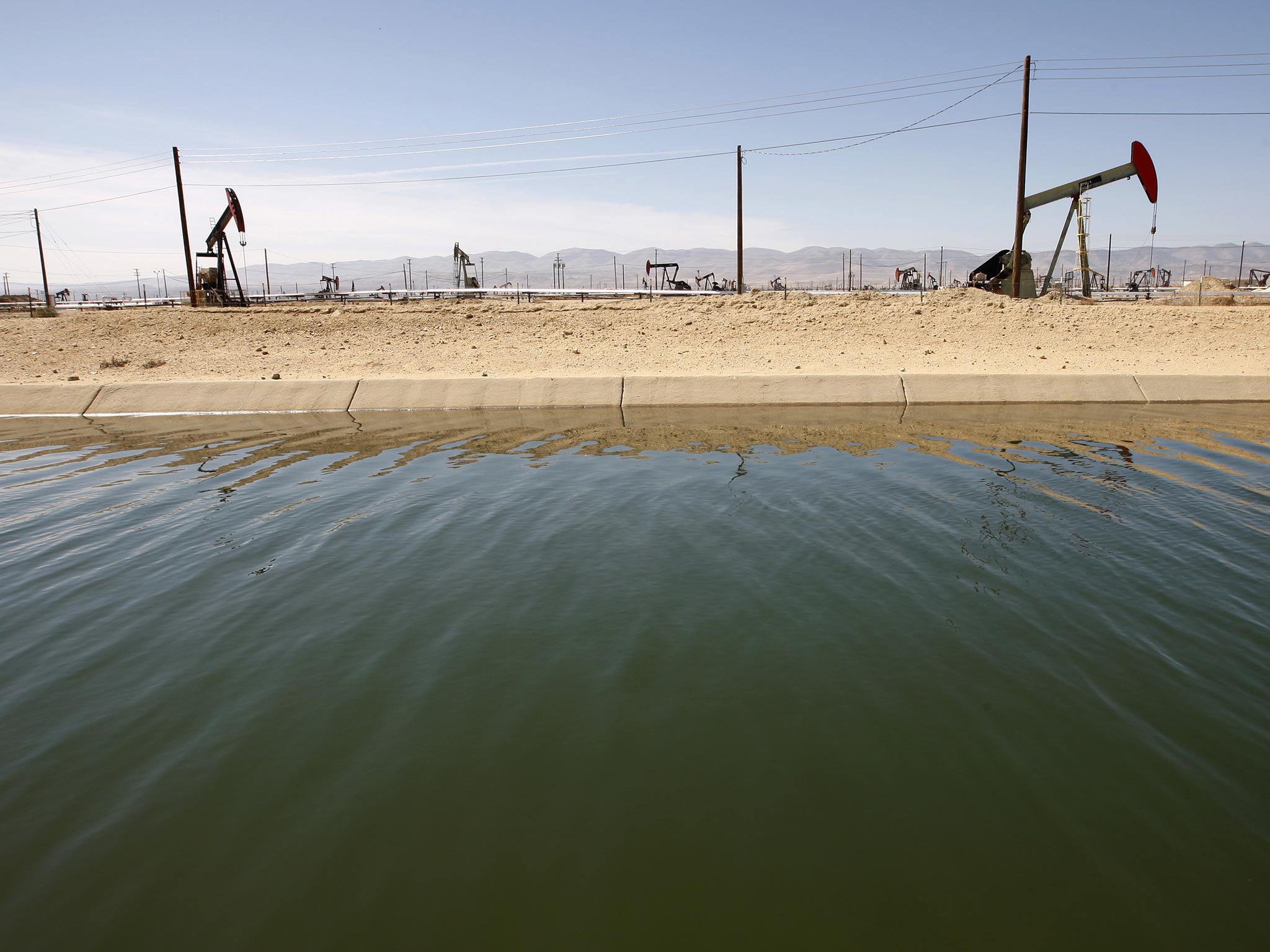Fracking and earthquakes: Scientists link rise in seismic activity in Oklahoma to increased oil and gas exploration
In 2009, there were 50 quakes in the central US state; in 2010 there were more than 1,000. Tim Walker reports

Your support helps us to tell the story
From reproductive rights to climate change to Big Tech, The Independent is on the ground when the story is developing. Whether it's investigating the financials of Elon Musk's pro-Trump PAC or producing our latest documentary, 'The A Word', which shines a light on the American women fighting for reproductive rights, we know how important it is to parse out the facts from the messaging.
At such a critical moment in US history, we need reporters on the ground. Your donation allows us to keep sending journalists to speak to both sides of the story.
The Independent is trusted by Americans across the entire political spectrum. And unlike many other quality news outlets, we choose not to lock Americans out of our reporting and analysis with paywalls. We believe quality journalism should be available to everyone, paid for by those who can afford it.
Your support makes all the difference.Between 1975 and 2008, Oklahoma recorded an average of no more than six earthquakes per year, yet now it is the second most seismically active of the contiguous United States, beaten only by California. Scientists have linked this surge in seismic activity to a parallel increase in oil and gas exploration, including fracking.
In 2009, there were almost 50 quakes in Oklahoma. The following year, that number leapt to more than 1,000. Most were not “felt” earthquakes – those of magnitude 2.5 and above, which can be detected by humans. However, the state’s annual record of 222 felt quakes, set in 2013, has already been broken this year, with 253 so far. Seismologist Austin Holland of the Oklahoma Geological Survey told Reuters: “We have had almost as many magnitude 3 and greater already in 2014 than we did for all of 2013… We have already crushed last year’s record for number of earthquakes.”
Earthquakes rarely cause damage unless they are of magnitude 4 or higher. A 4.3-magnitude temblor struck the same area near Oklahoma City on 30 March. In November 2011, the state suffered a 5.6-magnitude quake – the largest ever recorded in Oklahoma – which destroyed 14 homes.
Scientists have connected a sharp rise in small earthquakes in several states to the boom in underground oil and gas exploration, notably the controversial practice of hydraulic fracturing, or fracking. Waste water from fracking and oil drilling is pumped back into the earth to be stored in so-called “injection wells”. Several studies have shown that the water, forced deep underground in layers of porous rock, can trigger seismic activity.
Oil and gas companies insist that the techniques are safe, yet federal scientists believe their activities have contributed to a 20-fold rise in the number of small earthquakes striking the central and southern US in recent years. So-called “earthquake swarms” have occurred not only in Oklahoma, but also in previously sedate regions of Arkansas, Colorado, Ohio and Texas.
During 2010 and 2011, up to 1,000 micro-earthquakes occurred in and around the town of Greenbrier in Arkansas, thought to have been caused by underground waste-water disposal, which forced open a small and previously inactive seismic fault, generating the quakes – the largest of which had a magnitude of 4.7. The state’s oil and gas commission declared a moratorium on injection wells within 1,000 square miles, and a group of residents filed a class-action lawsuit against two energy companies, Chesapeake Energy and BHP Billiton Petroleum, for the damage caused to their homes. Five homeowners reached an undisclosed settlement with the firms last August.
Dozens of civil lawsuits related to fracking have been filed since 2009 in eight US states, for complaints including air pollution, noise pollution and groundwater contamination. But the Greenbrier case was the first in which oil and gas companies were sued for causing an earthquake. It may not be the last. Within 24 hours on 10 and 11 March, five earthquakes were recorded at a fracking well in Ohio, the largest of which registered as magnitude 3.
The state’s government ordered an immediate halt to the operations pending further investigation.
It is already familiar with the issue. In December 2010, an injection well in Youngstown began deep-storing waste water from fracking operations in neighbouring Pennsylvania. In the centuries since records began in 1776, Youngstown – which sits atop the Marcellus Shale gas-producing region – had never registered a single earthquake. In 2011, it experienced more than 100, with the strongest, a magnitude-3.9 temor, on 31 December.
The well was shut down shortly afterwards, and the quakes duly stopped. John Kasich, the state governor, issued an executive order demanding operators conduct seismic studies before being issued permits for injection wells.
The controversy has also come to California, a state that is all too familiar with seismic activity. This year, the Los Angeles city council voted to ban fracking in the city until council members were content that the process would not have a detrimental effect on Angelenos’ drinking water. The risk of earthquakes was also cited in the ban.
On 17 March a 4.4-magnitude earthquake struck the Santa Monica mountains near Los Angeles, close to an area where oil extraction activities have been reported. Though seismologists said it probably occurred too deep underground to be attributable to fracking, a group of LA council members have demanded an investigation into whether oil or gas exploration could have caused the quake.
Join our commenting forum
Join thought-provoking conversations, follow other Independent readers and see their replies
Comments